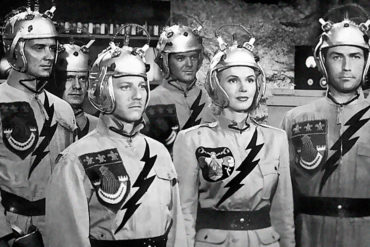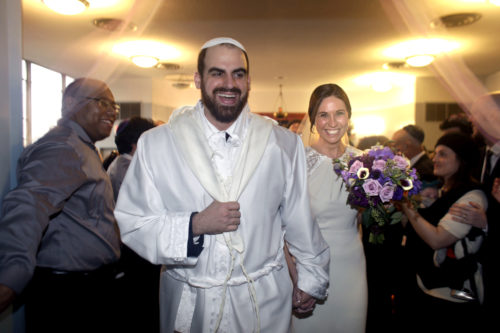According to the Talmud, in Shabbat 27a, there are two kinds of mitzvot in the world. There are the things that have no fixed measure, for which the reward will be only in the world to come. And then there are the mitzvot for which one will reap rewards in this world, as well as that to come. These include honoring one’s parents, acts of loving kindness, praying the daily tefilot in a communal environment, welcoming guests, welcoming a bride, accompanying the dead – and above them all, the study of Torah.
Welcoming a bride?
This seems like an odd inclusion. All of the other examples, well, they seem to fit more of a standard pattern. There are commandments to support those who cannot support themselves (accompanying the dead, welcoming guests, acts of loving kindness), and then there are mitzvot that help us to build community, by honoring our elders, and praying together, rather than alone.
So where does welcoming a bride fit into that? Why is it important, more than that, a commandment, to participate in this particular simcha? And how do we do it? Really?
3 months ago, my fiancé and I walked into our rabbi’s office with our heads firmly fixed on the carpet. Newly engaged, and in our thirties, we’d both waited a long time to find each other. But the chances of actually making it to the chuppah seemed futile. You see, my fiancé and I both work in Jewish education, and live in the high cost of living zone of Washington, D.C. Both of our parents had invested in our education rather than in accruing a wedding fund, and so there was simply no money on hand to help us get married. Reluctantly, we asked the rabbi if we could sign a ketubah in his office, and then sponsor a Kiddush for the community.
“No.” he said.
“No?”
“No.”
“A wedding should be a simcha. And if you can’t make one for yourself, the community needs to make one for you. Let me make some calls.”
Within a week, a group from the synagogue community had formed a committee to plan our wedding. Someone took on the task of preparing food, someone else decorated our 1950’s synagogue so that the tiled walls became strategically draped in homemade fabrics and tulle. Another committee member who runs a local wedding band donated his services, and was joined by friends and relatives on guitar, keyboard, saxophone, and drums. A member of the community who we were told loves to take photographs was recruited to be our photographer for the day.
When she arrived to start shooting, we discovered that, in fact, she usually photographs for The Washington Post. Someone bought beer and whisky so that my fiancé and I could both have a tisch. A benefactor donated money to the synagogue so that we could have flowers.
The teens of the shul, eager to participate, donned white shirts and black pants and skirts and became our servers, passing out ours’doerves, drinks, and serving dinner. A work colleague who is also a rebbetzin scheduled weekly lunch meetings that became my kallah classes. And the rabbi and maharat of the synagogue donated their time, and the use of the sanctuary and community hall to us for free.
Our wedding, a friend informed us after the fact, “restored his faith in Judaism.” It was low key, full of love, and unbelievably joyous. When we thanked the volunteers who had made it all possible, their response was consistent. “Are you kidding?” They said. “This was fun!!” “Thank you for the opportunity!”
We often assume that charity is all about giving. Counting our blessings, and thinking about those who have not. Giving is therefore an opportunity for self-sacrifice. To give of our time or resources to those who need it. It’s a beautiful idea, but in reality, this is a particularly Christian way of thinking about charity. In the Christian context, the ultimate act of charity is modelled by Jesus, who self-sacrificed himself, according to Christian tradition, for others.
Shabbat 27a, a passage that is repeated every morning by observant Jews during the morning shacharit prayers, reminds us that the Jewish tradition of giving operates out of a very different paradigm indeed. For Jews, it’s about participation. We accompany the dead, we welcome guests into our home, we form relationships with our elders based upon honor, and we welcome the bride in order to participate in her simcha, in her joy.
It’s a radical way to think about being in community, when you stop to think about it. It’s a paradigm that suggests that a community must be more than a group of individuals who opt to participate in a collective space. Rather, it must be a way of living in which each member participates in the life of the other. Within this paradigm, planning someone else’s wedding is not a sacrifice of time and talent, but a divine opportunity to participate in someone else’s joy.
Seen in this light, the inclusion of hachnasat kallah – welcoming the bride – in the list of mitzvot that will reap rewards in this life, and the world to come, is more understandable. The commandment is not that we should all become amateur wedding planners, but rather that we participate in the creation and the celebration of everyone’s moments of joy, and so be in deep relationship one to another. What better world could we possibly imagine?






